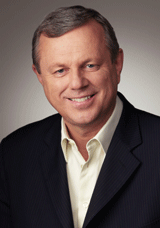The Honorable Michael Rann is the Premier of South Australia, the visionary behind the development of Adelaide as Australia’s “University City”—and the force behind a new partnership with Carnegie Mellon.

You are very articulate about your vision of the importance and future of higher education in South Australia. Will you share some thoughts with the readers of Carnegie Mellon Today?
I am the son of an electrician, the grandson of a London garbage worker, and the first member of my family to go to university. A university education transformed my life and massively expanded my opportunities.
In late 1989, at the age of 36, I was sworn in as South Australia’s Minister for Employment and Further Education.
In 1990, I introduced and passed legislation to establish South Australia’s third university, now our biggest, founded on the premise of expanding opportunity. It’s a university that seeks to include, not exclude. I firmly believe that our economic and social development will be enhanced by nurturing the talents of the many, not just the brilliance of a few.
Now South Australia, after some difficult years, has the highest number of people in jobs in our history and the lowest unemployment rate in 30 years. We have won ten billion dollars of high-tech defense projects in the past 14 months and we are about to see the biggest expansion of the mining industry in our history.
We are investing in education, skills, and science to help further transform our economy and generate opportunities for the future. That’s why I’m committed to developing Adelaide’s reputation as Australia’s university city, including not just our excellent local universities, but top-class universities from overseas. Carnegie Mellon is a crucial part of that vision.
The world seems to be in constant turmoil these days. What role does education play in creating mutual understanding between countries and cultures? In creating greater equity in economic growth and development?
In 2000, Adelaide hosted just 6000 overseas students. That’s jumped to about 20,000 and will rise much further. Bonds that are made at university endure for a lifetime and will enshrine partnerships between cultures and nations and become the engine-room for social and economic advancement.
What made you choose Carnegie Mellon as your partner in achieving this vision?
I had been aware for some years of Carnegie Mellon’s important role in the regeneration of Pittsburgh. Once known internationally as America’s steel town, Pittsburgh is now known as a university city. I was also aware of Carnegie Mellon’s reputation as one of the top universities in America in IT management, robotics, software engineering and public policy, as well as its reputation as a “hands on” university, which looked out, not in. I consulted leading academics in Australia, who surveyed leading universities in the world and determined Carnegie Mellon to be the best possible fit, both for Australia’s students and overseas students—particularly from India, China and Southeast Asia. We are delighted to be the Southern Hemisphere home of the Heinz School and the Entertainment Technology Center. We hope the Software Engineering Institute will follow.
We hear that because of your partnership with Carnegie Mellon, you are now quite a Pittsburgh Steelers fan.
I’m a big sports fan—particularly of soccer and “Australian Rules” football. Most of my U.S. political buddies are fans of the New England Patriots, so I am delighted that my friends at Carnegie Mellon enrolled me as a Steeler fan. I even have a Steeler jersey signed by “The Bus” [Jerome Bettis].
Related Links:
Heinz School Australia
About the Heinz School
ETC in Australia
ETC in Australia
Welcome to Adelaide



